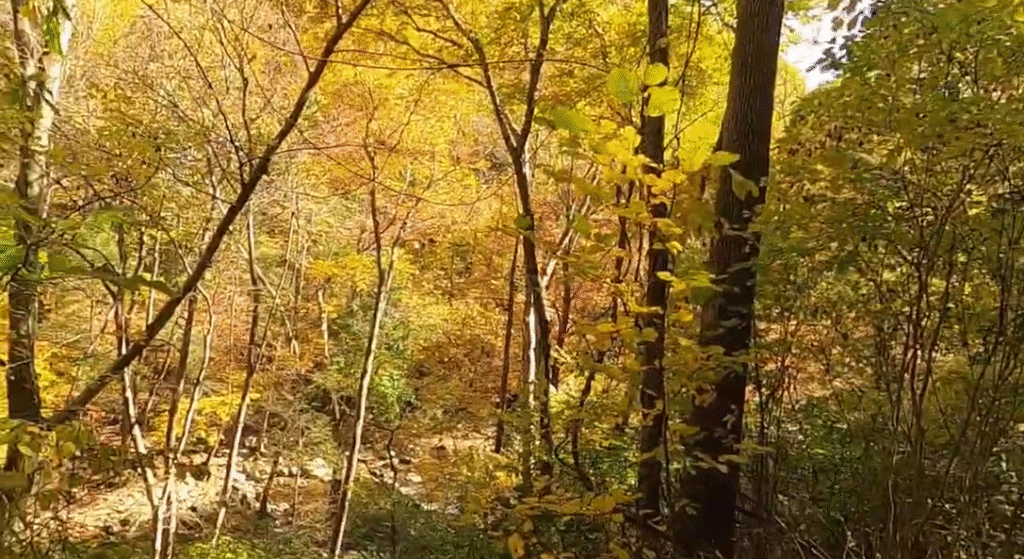With its modest boundaries containing a tapestry of history, nature, and subtle vitality, Columbia, New Jersey, stands elegantly on the edge of the Delaware River. The identity of a place with fewer than 220 inhabitants goes well beyond the population. Tucked away between riverbanks and ridges, it provides a base for adventurers and a haven for those looking for peace. It is especially advantageous for outdoor enthusiasts because of its close proximity to the Delaware Water Gap, which provides a unique combination of beautiful hiking, wildlife viewing, and river activities all within minutes of one another.
The Columbia Covered Bridge, a Burr truss masterpiece that connected Columbia with Portland, Pennsylvania, is the most vivid reminder of the town’s past. The bridge was torn from its moorings on August 19, 1955, when Hurricane Diane’s unrelenting rains turned the Delaware into a raging force. Witnesses characterized the scene as both harrowing and captivating, with a large wooden span rupturing like matchsticks against the downstream railroad bridge’s steel. Despite having occurred decades ago, that loss is still remembered by Columbians as a point of vulnerability and resiliency.
Here, the natural world seems incredibly vibrant. Trails in Worthington State Forest lead up to the summit of Mount Tammany, where a remarkably clear view of the Delaware Water Gap can be seen. The view changes with the seasons, with summer bringing lush greens, autumn bringing a flurry of fiery leaves, and winter bringing gentle blues and whites. Due to the overwhelming size of the terrain, hikers frequently find themselves pausing more for reflection than for rest.
Columbia, New Jersey – Key Facts
| Category | Details |
|---|---|
| Location | Knowlton Township, Warren County, New Jersey, USA |
| Status | Unincorporated Community, Census-Designated Place |
| Population (2020) | 215 |
| ZIP Code | 07832 |
| Area Code | 908 |
| Total Area | 0.13 sq mi (0.33 km²) |
| Elevation | 305 ft (93 m) |
| Notable Natural Sites | Delaware Water Gap, Worthington State Forest, Mount Tammany, Jenny Jump State Forest |
| Historic Landmark | Former Columbia Covered Bridge (destroyed in 1955 flood) |
| Local Attractions | Lakota Wolf Preserve, Four Sisters Winery, Brook Hollow Winery, Land of Make Believe, Shawnee Mountain Ski Area |
| Reference | VisitNJ.org – Columbia, NJ |

Experiences with wildlife are equally captivating. A popular destination, the Lakota Wolf Preserve exposes guests to wolves, bobcats, and foxes in a setting that values conservation. These tours are incredibly effective at fusing inspiration and education, giving visitors a greater understanding of how resilient yet fragile these species are. The experience, which combines science, storytelling, and sensory immersion, seems especially novel to many.
The charm of Columbia is further enhanced by its wineries. In addition to being tasting rooms, Four Sisters Winery and Brook Hollow Winery serve as gathering places for locals and tourists to enjoy glasses of expertly chosen vintage wines. These areas have significantly increased the town’s capacity to draw weekend visitors, particularly from neighboring cities like Philadelphia and New York. Their events, which are frequently surrounded by undulating vineyards, are surprisingly reasonably priced for those who want to unwind and feel sophisticated.
Columbia is a year-round destination thanks to seasonal attractions like Shawnee Mountain Ski Area and the Land of Make Believe amusement park. The Delaware River is a bustling venue for fishing, kayaking, and tubing during the summer. Snow-covered slopes just over the Pennsylvania border provide a completely different pace in the winter. The small economy of Columbia is kept active with tourists without becoming oversaturated thanks to this cyclical tourism.
Columbia’s demographics mirror those of many rural communities. The community’s median age of 45.4 indicates that there is a balance between working-age residents who commute or telework and retirees who are drawn to the peaceful, picturesque surroundings. Modern homes nestled into forested plots and historic farmhouses with expansive porches are among the housing options. The rise in remote work in recent years has greatly lessened the sense of isolation that once pervaded small towns, enabling locals to maintain connections to the city while taking in the slower pace of rural life.
The story of the environment has changed as well. A significant step toward ecological restoration was taken in 2018 with the removal of the Columbia Lake Dam, which improved fish passage and restored river habitats. The biodiversity of the area has benefited greatly from this choice, which is indicative of larger conservation priorities. Additionally, it establishes Columbia as a player in a broader discussion about striking a balance between environmental stewardship and heritage preservation.
Columbia’s ties to the larger Warren County arts and heritage scene contribute to its thriving cultural landscape. The town’s appeal is enhanced by a network of small galleries and historic sites, Hackettstown’s Centenary Stage Company, and Belvidere’s Victorian Days. During these events, visitors frequently learn about Columbia and extend their journeys to explore its riverfront, wineries, and trails. A very effective regional strategy is demonstrated by this cross-pollination of tourism, which uses common attractions to the advantage of several communities.
The town’s size creates a social familiarity that is becoming more and more uncommon. Plaques are not the only source of stories about the covered bridge; people share them over coffee, at town gatherings, and while taking leisurely strolls along the river. This oral tradition is incredibly resilient, enduring across generations and preserving the materiality of history. Many larger towns struggle to maintain this attribute because of their migratory populations.

